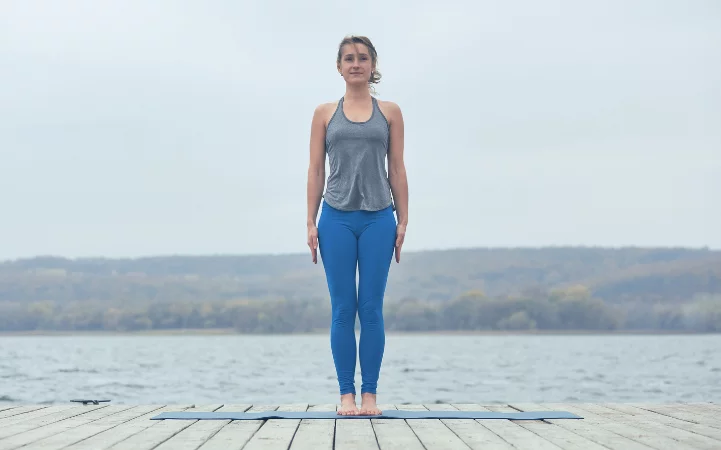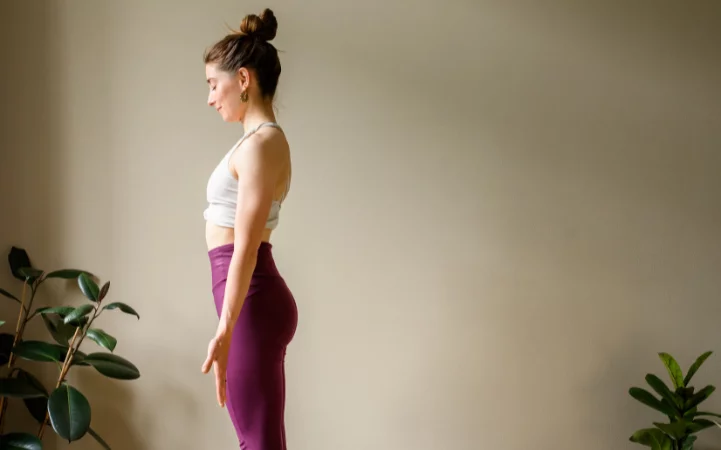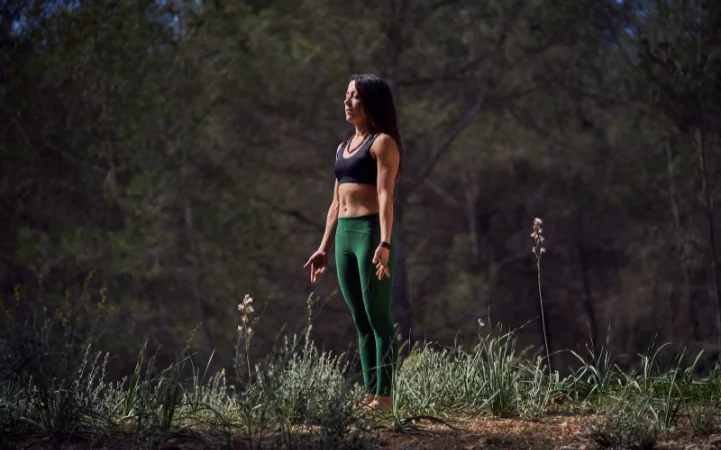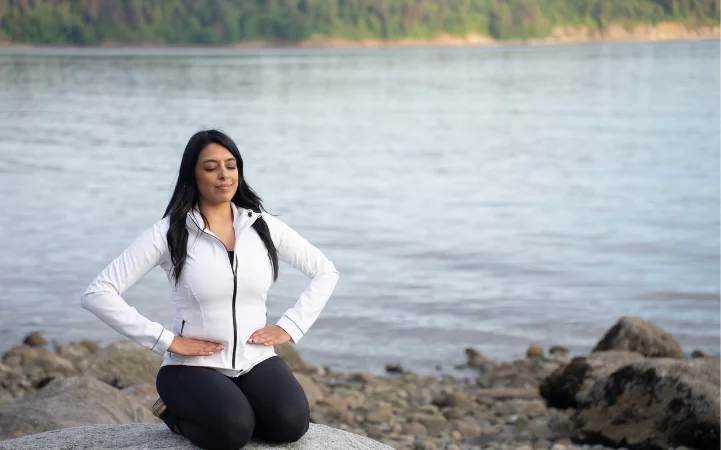
poses
Find balance and resilience with the simple yet profound Mountain pose. Read our step-by-step instructions, including tips and more.
Mountain pose is considered a foundational yoga pose in any yoga practice. While seemingly simple, this pose requires absolute attention to detail and stillness. Mountain pose, also known as Tadasana (Taa-DAA-SUN-aa), provides a firm foundation for practicing yoga. The pose’s name comes from the Sanskrit words Tada, which means mountain, and asana means seat or pose.

This basic standing pose offers wonderful benefits:

If you want to practice mountain pose with the following conditions, please use caution or avoid it altogether.

If you begin your practice with standing poses, there are no preparatory poses for Mountain pose. Mountain pose is often part of the warm-up sequence at the beginning of a yoga practice. Sri Sri Yoga, in particular, starts with walking in place to increase the heart rate and ends the warm-up with a Mountain pose.
If you begin your yoga practice with seated postures, you can use the following poses as preparation for the Mountain pose.

Starting from a neutral position, stand with your big toes touching and heels slightly apart.
With arms straight and resting on your sides, keep the palms facing forward.
Ground all four corners of both feet firmly into the floor. Keep your weight evenly distributed on both feet.
Take a few breaths in and out.
Once you feel stable, engage your quadriceps and lift your knee caps by flexing your thigh muscles. Keep your thighs slightly apart.
Tilt your pelvis under and lift it towards your navel, lengthening your tailbone slightly towards the floor.
On an inhale, raise your shoulder blades towards your ears; on an exhale, roll your shoulders back and down your spine, opening your chest and straightening your posture.
Stack your head and neck directly above your spine, creating a straight line through the entire body. Imagine that a string is lifting your head upwards from the crown of your head.
Relax all muscles in your face, including your tongue. Relax your eyes and maintain a steady gaze straight in front of you.
Maintain this firm, strong foundation.
Practice tadasana independently or as a transition into standing postures.

If you are unable to stand, you can practice Mountain pose sitting on a chair. Plant your feet flat on the floor and place your attention on the area between the pelvis and the crown of your head. Optional: Raise your hands above your head.
If you have difficulty standing and keeping your balance, try practicing the Mountain pose with the support of a wall behind your back.
If you are in the later stages of pregnancy, keep your feet hip distance apart.

Don’t rush. Take your time aligning your spine and balancing your stance.
Start by paying attention to your feet and making sure your weight is balanced on your whole foot rather than just the side, back, or front of it.
Learn Victory breath, also known as ocean breath or Ujjayi breath. Breath is an integral part of a yoga practice. Watch this video to learn Victory breath so you can use it throughout your yoga practice.

If you want to get the most out of your yoga practice, add Sudarshan Kriya Yoga, also known as SKY Breath Meditation. Breathing, meditation, and yoga, when practiced regularly, supercharge the life benefits that yoga offers.
SKY practitioners report:
Register for the Art of Living Part 1 course to learn SKY today!












